ONE DAY, YEARS AGO, the exterior handle of my sliding side door snapped off. Panic!
I tried super gluing it back in place. No luck.
I tried epoxy putty. No luck.
So I learned how to slip my finger tips behind the remaining part of the handle and tug on it just right, sometimes with a thump on the other end of the door to get everything unlatched.
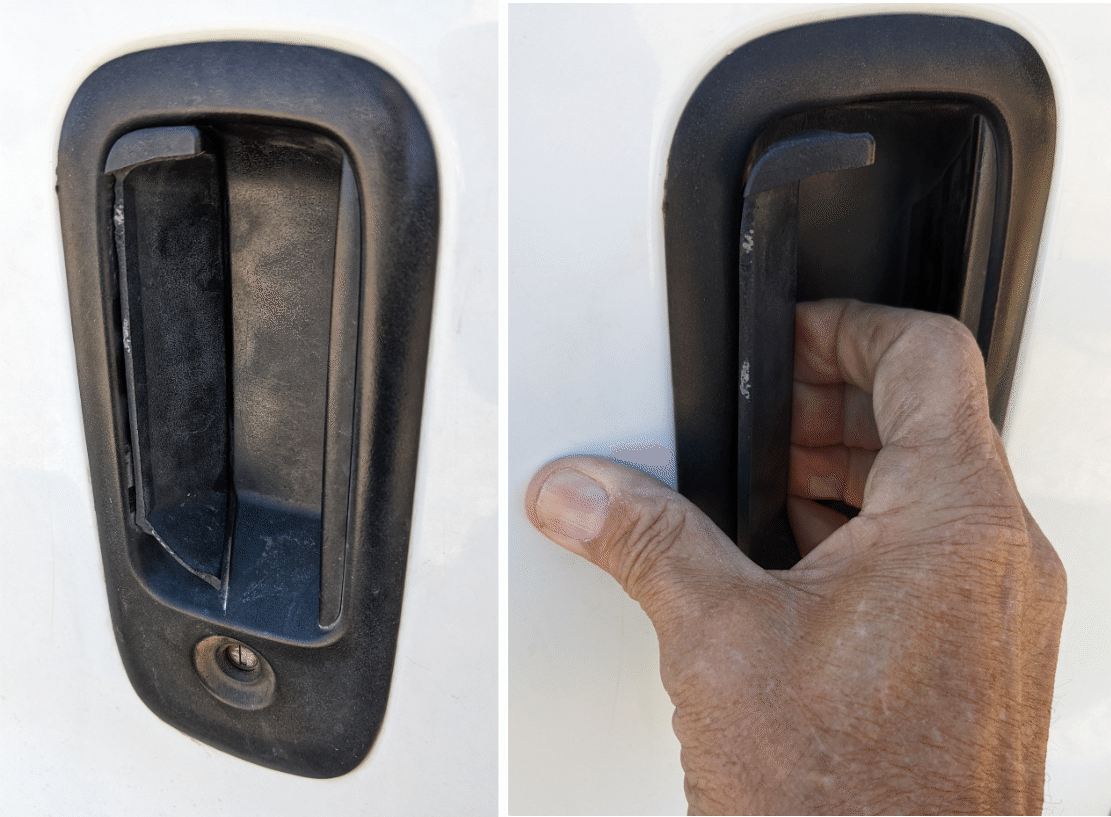
It was annoying but I kept telling myself I could live with it. A more reasonable part of my brain kept nagging me to fix it. The nah-it’s-okay part of my brain said I’d have to practically tear the door apart, I might need a rare, specialized tool, and that it was better to keep it the way it was rather than risk messing things up and it not functioning at all. Mr. Reasonable Brain said to at least see if there were any how-to videos. Sigh, okay.
The University of YouTube came through. After watching a few videos I thought, “Yeah, I could probably do that.” I found a Genuine GM Part online and ordered it up.
There was another reason I had been avoiding the repair. When I insulated my Express cargo van nine years ago I had filled the side door with loose cellulose. (It worked well, by the way.) I would need to remove the interior door panel to access the latch. Cellulose would come tumbling out. I’d need to work where I could contain the mess and clean it up. And I’d need to either stuff all that cellulose back in or replace it with a different type of insulation. Fiberglass would make sense, but you can’t buy just a little of it.
But now I was at my friend Lou’s place looking after him while he’s dealing with cancer. He has a shop, a vacuum, and neighbor friends with leftover fiberglass insulation. The time was right.
I got out my tools—the critical one being a T30 screwdriver I just happened to have for some forgotten reason—along with a drop cloth and shop vac. I cued the best of the how-to videos on my laptop and pried off the interior door panel. I had expected a fluffy cascade of cellulose bits, but years of shaking and baking had formed it into a delicate mat. That made things a little easier.
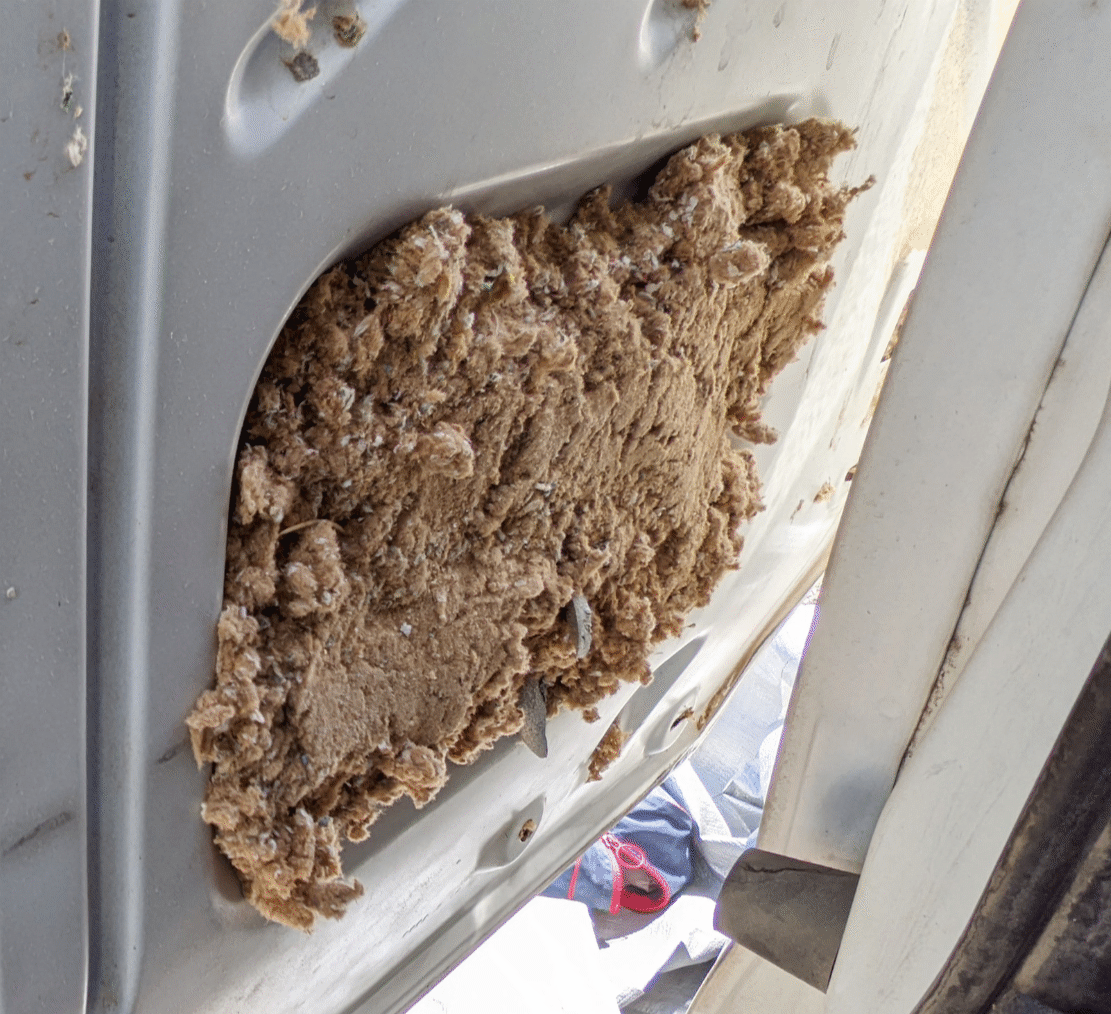
In order to replace the exterior handle you have to first remove the internal locking/latching mechanism, which is a bundle of levers, springs, and actuating rods. I was lucky not to have power locks complicating things further. Some of the rods had to be located and disconnected blindly. More force than expected was required to “just pop the end out of the plastic washer.” But I got it done, with only minor cuts and scrapes inflicted by the raw edges of the door frame.
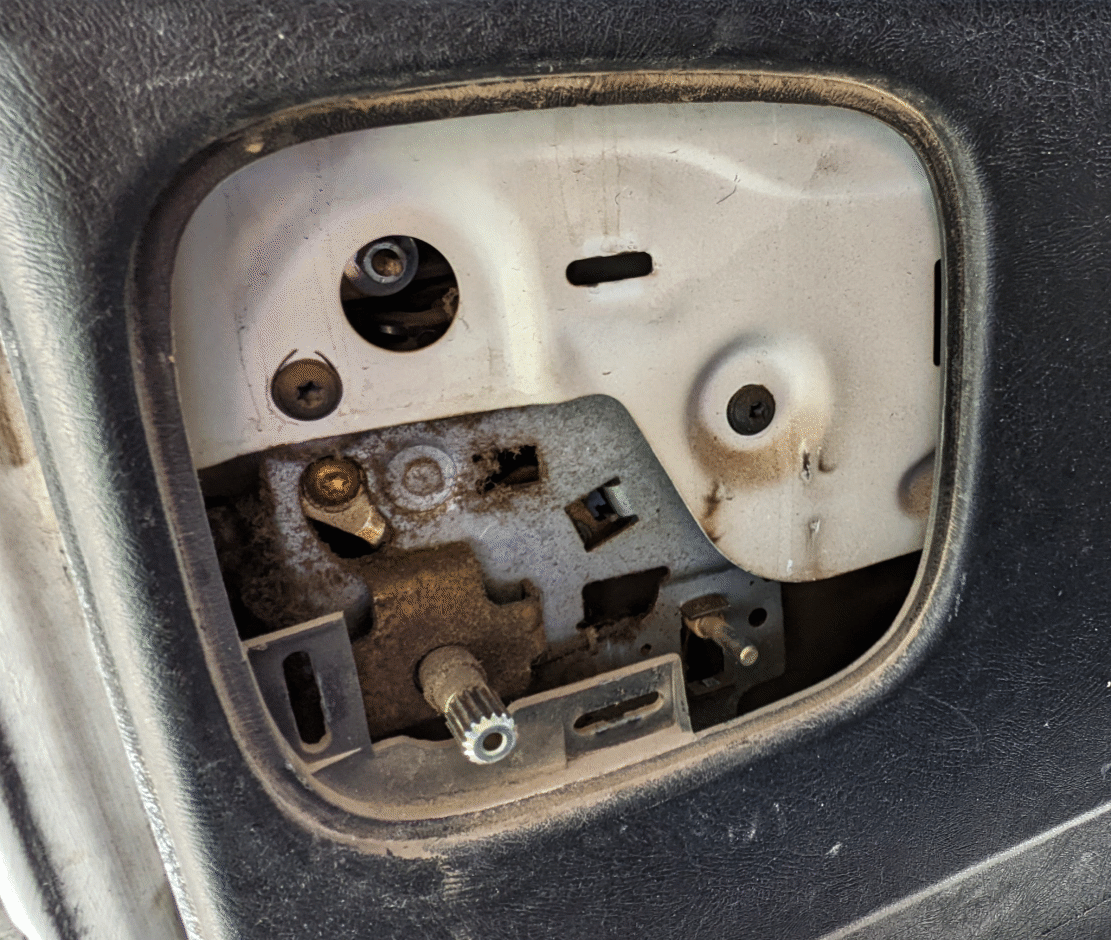
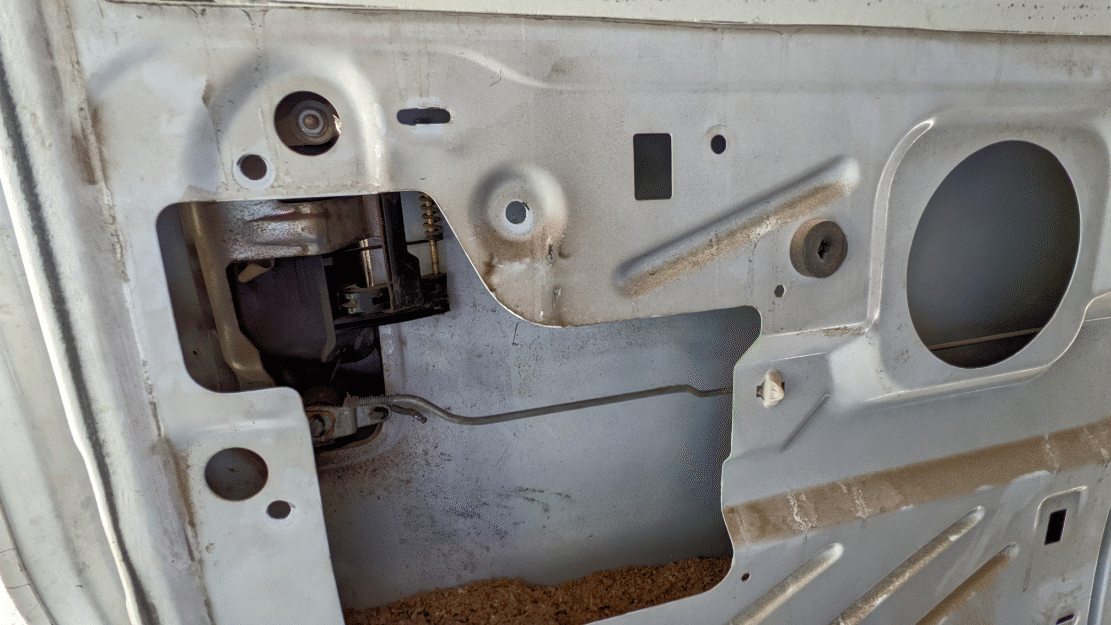
Reassembly was trickier. More working by touch. Realizing one of the short actuator rods had flipped in the wrong direction. Figuring out how to apply enough force in an extremely cramped space to “just pop the end back into the plastic washer.” I think they use trained octopi at the factory to assemble this stuff.
The huge cross-my-fingers challenge was to bolt the latch mechanism back into exact alignment with the catch on the door opening. I had drawn around the four bolt heads before removing them, and I was fairly certain I had gotten things properly reassembled.
The door worked! Yay!
But after I reinstalled the interior panel the door wouldn’t lock. ERGH! The problem turned out to be simple. The plastic lock-unlock lever hadn’t engaged with it’s counterpart in the mechanism when I reattached the panel. It was blocking the movement of the latch internals. Fixed. Working. Yay again! In fact, the whole door is working better than before. Thumping no longer required.
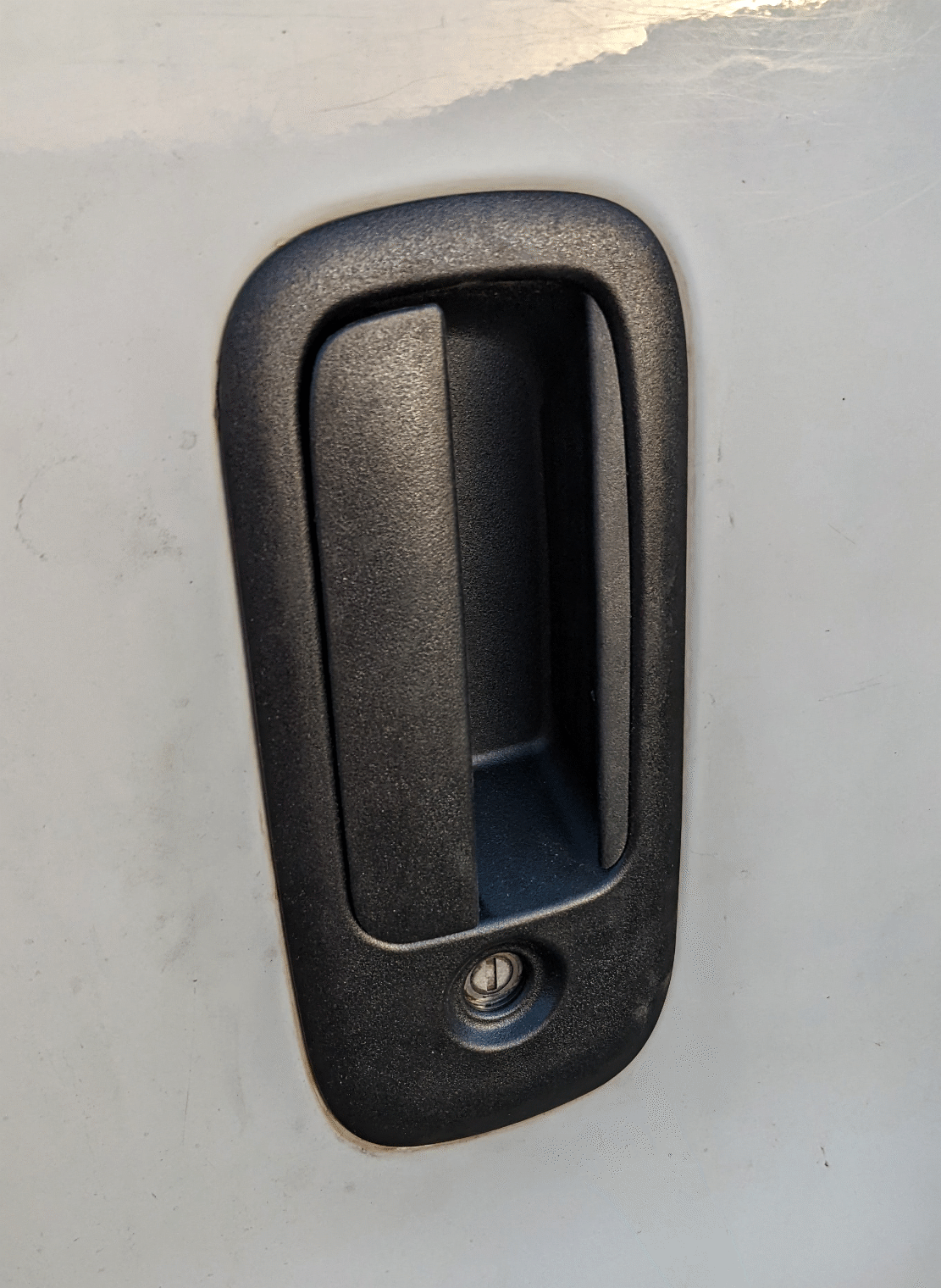
I didn’t write this article to brag about my barely adequate mechanical abilities. It’s more about how I managed to acquire my barely adequate mechanical abilities. Over the years I found information then, most importantly, I tried it. That’s how we learn anything, right? The medical world has a saying about learning surgical procedures: Watch one, do one, teach one. That applies to mechanical repairs as well. Watch a video, try it yourself, and doors will open for you. And you’ll be less at the mercy of those who did gain the knowledge and experience and want to charge you for it.

Good job! Much cheaper than a mechanic! I would have to pay a mechanic, sorry to say. I wouldn’t want to tear my hands up.
“Over the years I found information then, most importantly, I tried it.”
I used to have a working furnace in my 5th wheel, then I tried to replace the dead fan motor, watched all the YouTube videos, photographed everything. Couldn’t get the motor out in the end. Three hours of mobile tech time later, and he seemed to know what he was doing, motor replaced but still no furnace, at least he only charged me an hour. Still dead almost 2 years later. Next time I take it straight to the shop…
When we try it, we learn whether we can do it or we can’t. Both are useful to know. There have been a handful of repair attempts where I got part way into it and realized, ah, no, this is beyond me, and backed out, reassembling things, and taking it to a pro. Each time I learned exactly where my limits were and that I wouldn’t be wasting money by paying someone. And there are things I know I can do, like an oil change, but that having done a few I don’t want to deal with the mess of it and needing to dispose of the old oil. Having done it, I see it’s worth paying someone.
Been their done that, At 73 working in construction most of my life. I whole heartily agree .
You didn’t mention figuring out how the interior panel comes off. The swing out side doors on my Express have interior panels riveted on. At least you can see those. Was yours held on with the hidden plastic push clips that tend to break? I miss the seventies and eighties cars where everything was exposed silver screws.
My sliding door uses metal clips and a couple of plastic ones that survived the ordeal.
It’s exciting to see a “Fix It” series.
Is there information on how to change the bulb in a unsealed headlight on a 2019 Chevy Express Cargo Van?
Try this.
https://youtu.be/FjqiGgyM5XQ
Thanks.